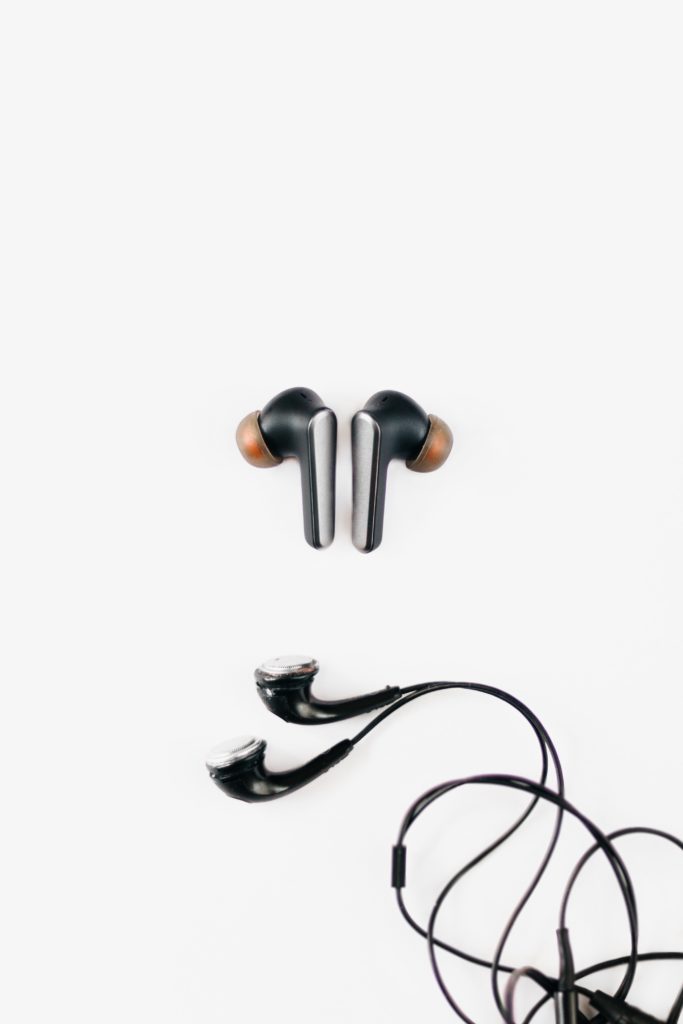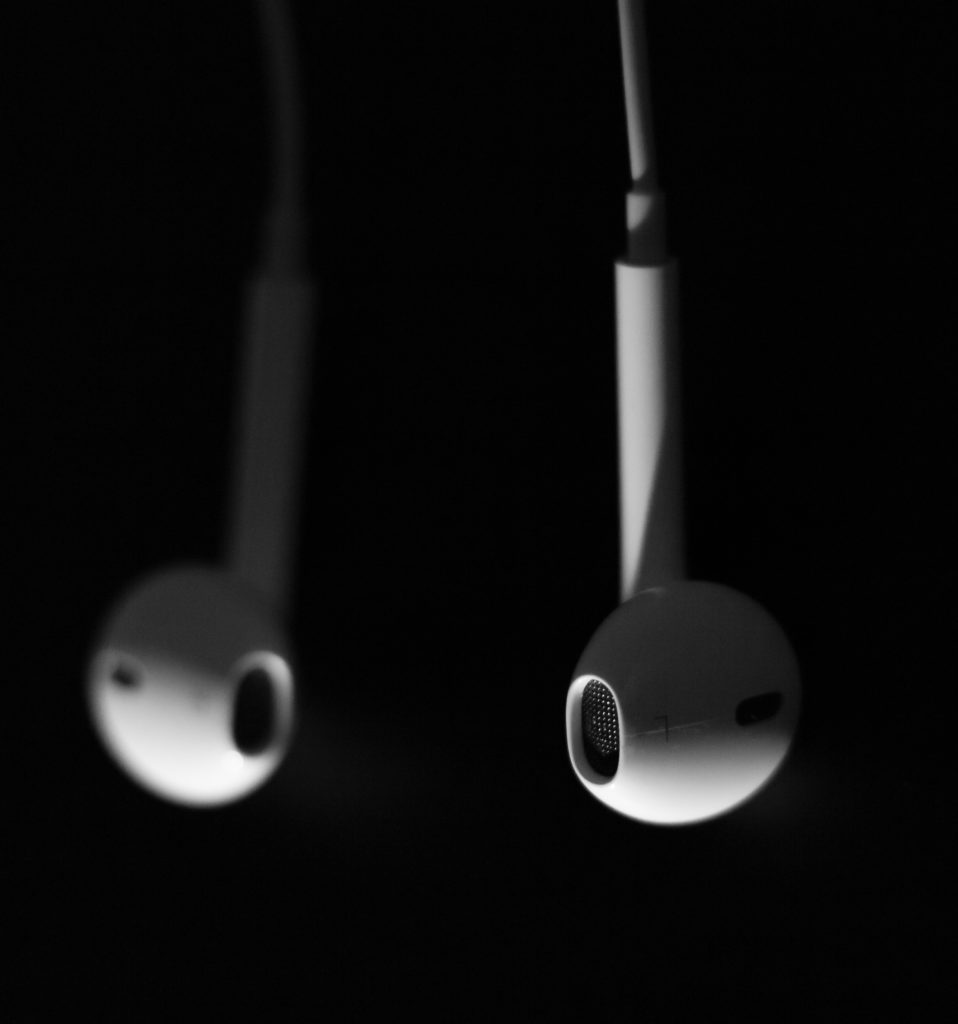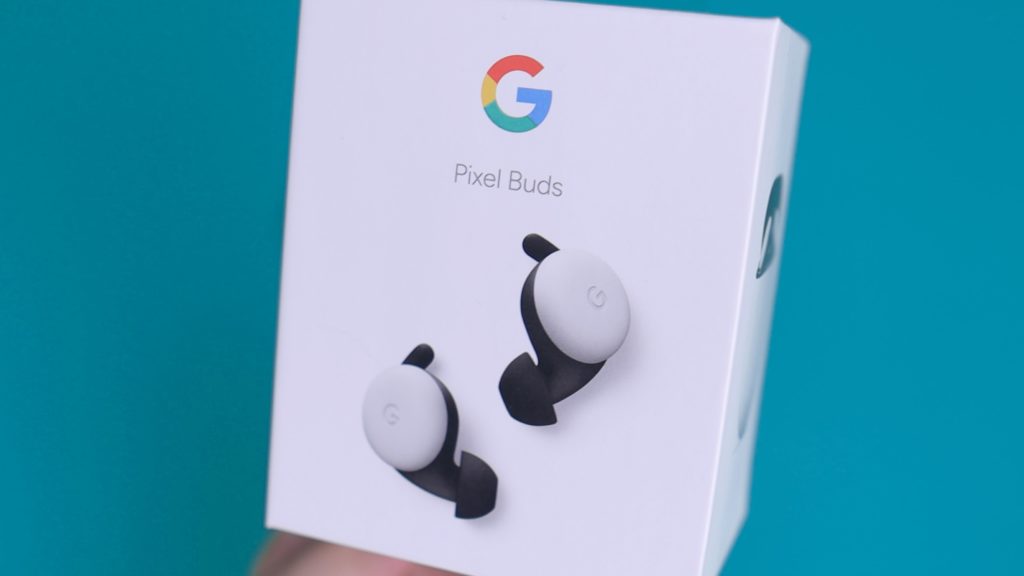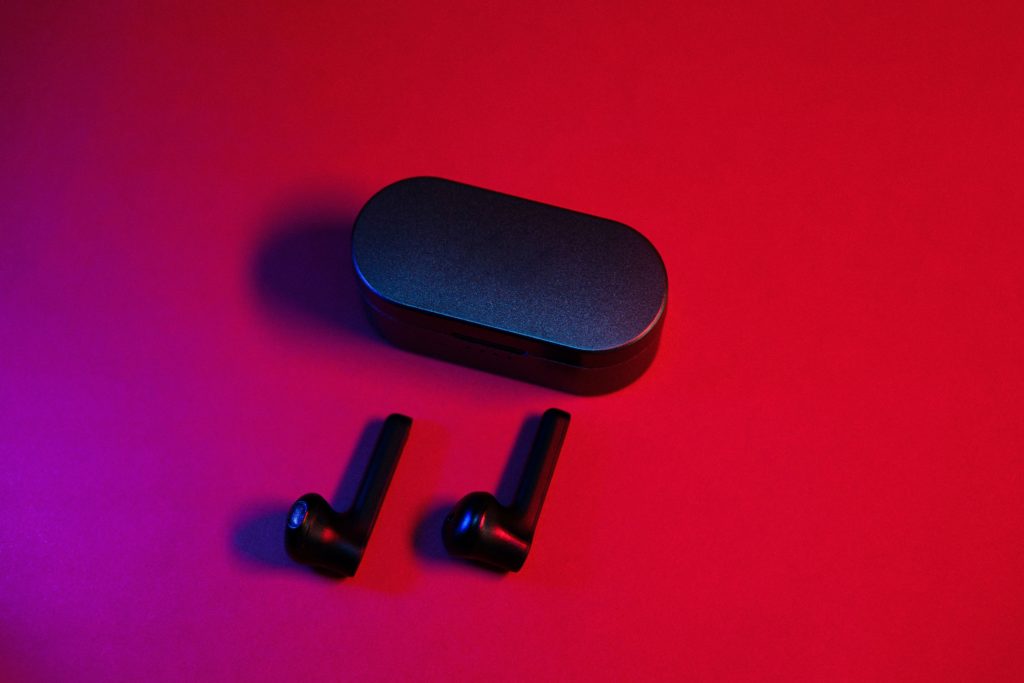Our smartphones have become our everyday music player. To listen to music from our smartphones, we need earbuds. However, choosing the best pair of earbuds can be a daunting task. First, you need to pick earphones that are perfect for you, your lifestyle and your music preferences. So, what are the perfect earbuds for you?
The first decision to make is whether to go for wired or wireless earbuds. Although this sounds simple, it is not easy to decide which is better. In this article we shall break down the pros and cons of choosing between a wired and a wireless earbud, and hopefully help you choose one that fits your needs.
Wired Earbuds

Wired earbuds are often as entry level inexpensive earbuds that can be plugged into a 3.55 mm jack for a quick and easy listen. However, these earbuds are not only pocket friendly, let’s look at their advantages.
Advantages of Wired Earbuds
Price
As already mentioned, wired earbuds are ideal if you are on a tight budget. Most wired earbuds cost less than their wireless counterparts. Why is this so? This is because wireless technology is expensive to manufacture.
Sound Quality
Wired headphones receive analog signals which can handle more signal than Bluetooth. They thus offer better sound quality. Several popular ones from premium manufacturers have been used in music studios for half a century as a reference standard for producers and musicians.
Ubiquity
As long as your source of music has a 3.5mm input, you can connect any wired headphone. Although most modern smartphones don’t have the standard audio jack, there are adapters and cables such as Lightning and USB-C to solve this issue.
No Batteries/ Charging
Wired headphones don’t need a battery. However, noise cancelling wired headphones are powered by a battery. In wired headphones, you are only required to plug in your headphones into your audio source and boom!! You’re ready to rock.
Lets now look at the disadvantages of wired earbuds.
Disadvantages of Wired Earbuds

Cable
The biggest concern you probably have with wired earbuds is with the cable itself. If you are a desk job worker you won’t have an issue with the wire. However, the cable could get into the way if you move around a lot. They are not ideal for you if you like exercising or working outdoors while listening to your favorite music via your earbuds. The cables can also get tangled and caught in an object and even get damaged.
Wireless Earbuds
If earbuds are described as wireless, they have the ability to connect with your devices without wires. There is no convenience today, than having a pair of wireless earbuds that work seamlessly with your gadgets. Wireless earphones have been using Bluetooth to pair with smartphones, laptops, TVs, and other devices. However, when Apple dropped the 3.5mm jack from iPhone7, other smartphone manufacturers followed suit. With that, the use of wireless headphones exploded. Here are reasons why wireless earbuds have grown in popularity.
Advantages of Wireless Earbuds

Freedom
There are no tangled cables. Your movement is no longer restricted. With wireless earbuds you can freely move around the house or office without missing a word of your music or podcast. Besides, the lack of wires makes it easy to:
- Jog while listening to music
- Play video games without sitting too close to the TV.
- Board on a train on your daily commute without wires getting your way
Compact Size With More Features
Wireless earbuds are becoming smarter than before. They boast of several smart features. You can connect them to your virtual assistant of choice. Some have added features such as sweat/ water resistant or even waterproof to keep them safe during sweaty workouts. Besides, some also have active noise cancellation giving you peace and quiet in noisy environments.
Disadvantages of Wireless Earbuds
The cost of convenience
Although it is true that the cost of manufacturing headphones has come down, wireless headphones still cost more than their equivalent wired counterparts. A wireless earbud is made of several devices and not just the headphones.
All wireless earbuds have a Bluetooth receiver, tiny speakers, batteries, electronic components that connect to your smartphone, a built amplifier, and a digital to analogue converter to ensure the data you are streaming from your phone gets fed as an electronic signal that the speakers can understand. These components end up adding the cost of wireless headphones. Wired headphones only have a pair of speakers connected to a 3.5mm jack.
Wireless Earbuds have a Limited Lifetime
Wireless earbuds are battery powered. Like all batteries, they ill eventually die rendering them useless. Most earbuds are designed to last 3-4 years. You will therefore need to replace them as much as you replace your smartphone.
You also have to remember to charge the batteries. If it runs out, there is usually a complete loss of function. However, if your model has a detachable cord, you can plug it in as a backup.
Compromising on Sound

Although popular, Bluetooth is a source of several pain points. When a new Bluetooth version is introduced, the older Bluetooth headphones become obsolete. While Bluetooth works fine for streaming music, it cannot transmit the large amounts of data needed to listen to high resolution music that comes along with formats such as FLAC and WAV.
No matter how brilliantly sounding your wireless earbuds are, Bluetooth will limit the quality of your output by down-sampling music to lower standards. Although newer Bluetooth formats such as QUALCOMM’s AptxHD and Sony’s LDAC attempt to solve this limitation, their widespread adoption is still miles away.
How Do Wireless Headphones Connect?
Here is how most wireless headphones connect;
Bluetooth

Bluetooth is a wireless protocol that allows you to connect or pair two devices over a short distance. Many modern devices support Bluetooth and are easy to set up. To connect your earbud via Bluetooth to a device such as your smartphone, you need to ensure that the earbuds are in Bluetooth pairing mode. You can activate this by holding down the Bluetooth pairing button on the headphones’ housing. You will then just need to find the headphones in the Bluetooth setting menu on your smartphone device.
NFC (Near Field Communication)
This is almost similar to Bluetooth but much easier. You no longer need to find your device name in the pairing menu on your smartphone. Instead, you physically touch your smartphone on the N symbol on your NFC supporting headphone to connect automatically
Wi-Fi
Wi-fi is what you use to connect wirelessly to the internet at your home or office using an internet hub or router. Unlike Bluetooth, Wi-Fi has a wider range. Devices don’t have to be too close to each other. However, both devices need to be connected to your local Wi-fi network. This means that wi-fi headphones are only really suitable for use at home.
Sound quality can be better than Bluetooth because you can transmit greater sizes of audio data. However, the difference is miniscule. Its only relevant for audiophiles listening to large files such as lossless audio format recording.
Infrared
The most prevalent use of infrared is in the TV remote. These headphones use an infrared beam to transmit sound from a base unit. They often have a short range (around 7 meters). Just like in your TV, you also need a clear line of sight or you will lose your connection. This means that you cannot wander around your house using infrared headphones. This explains why infrared headphones are so rare.
Custom Wireless Connections
Some headphones still come with dedicated docks for recharging the headphones after use. They usually have their own custom wireless connection frequency between the headphones and dock. These headphones are designed for private listening to your TV for entertainment and have the advantage of always being paired. However, it’s difficult to connect these headphones to other devices.
What Are the Best Lifestyles for Wired Headphones?
The best lifestyles for wired Headphones include:

- Desk Jockeys: Wired headphones are ideal if you work on the desk for long hours. If You are an office worker and you want to listen to music, you can connect your wired headphones and listen to superb music.
- Audiophiles: Audiophiles such as DJs and musicians set the bar for high quality music. WIth wired headphones, these individuals won’t have to sacrifice sound quality at any time.
- Individuals Who are Hard of Hearing: Because of the unsurpassed sound quality, wired headphones are a viable option for those who are hard of hearing.
What Are the Best Lifestyles for Wireless Headphones?
The best lifestyle for wireless headphones includes:
- Athletes: Wireless headphones can take your workouts to the next level. With wireless headphones, you can lift weights, run on the treadmill, and perform other exercises while listening to your favorite music, without worrying about getting tangled in any wires.
- Travelers: If you like listening to music and podcasts but you are always on the go, the wireless headphones are a must have. These headphones will allow you to seamlessly listen to music as you travel the globe.
- Gamers: Wireless headphones will make you feel like you are part of your favorite video game. The lack of wires also means that you don’t have to sit so close to the TV to follow your favorite game.
Verdict

It is impossible to say which is better between wired and wireless earbuds. It all comes to priority. If you are looking for good sound, then go for wired earbuds. However, you can prioritize convenience over sound especially when looking for earbuds for working out, long flights, or for a crowd commute.
Can we have earbuds with incredible sound quality and offering the convenience of being wireless? This is certainly what most earbud manufacturers are working on. We now have in-ear earbuds and emerging Bluetooth codec such as AptXHD and LDAC which enables them to deliver high audio resolution without wires.
This brings us to the end of our comprehensive article on which is better between wired and wireless earbuds. I hope this post helps you to make a decision. Keep it here for related content.
